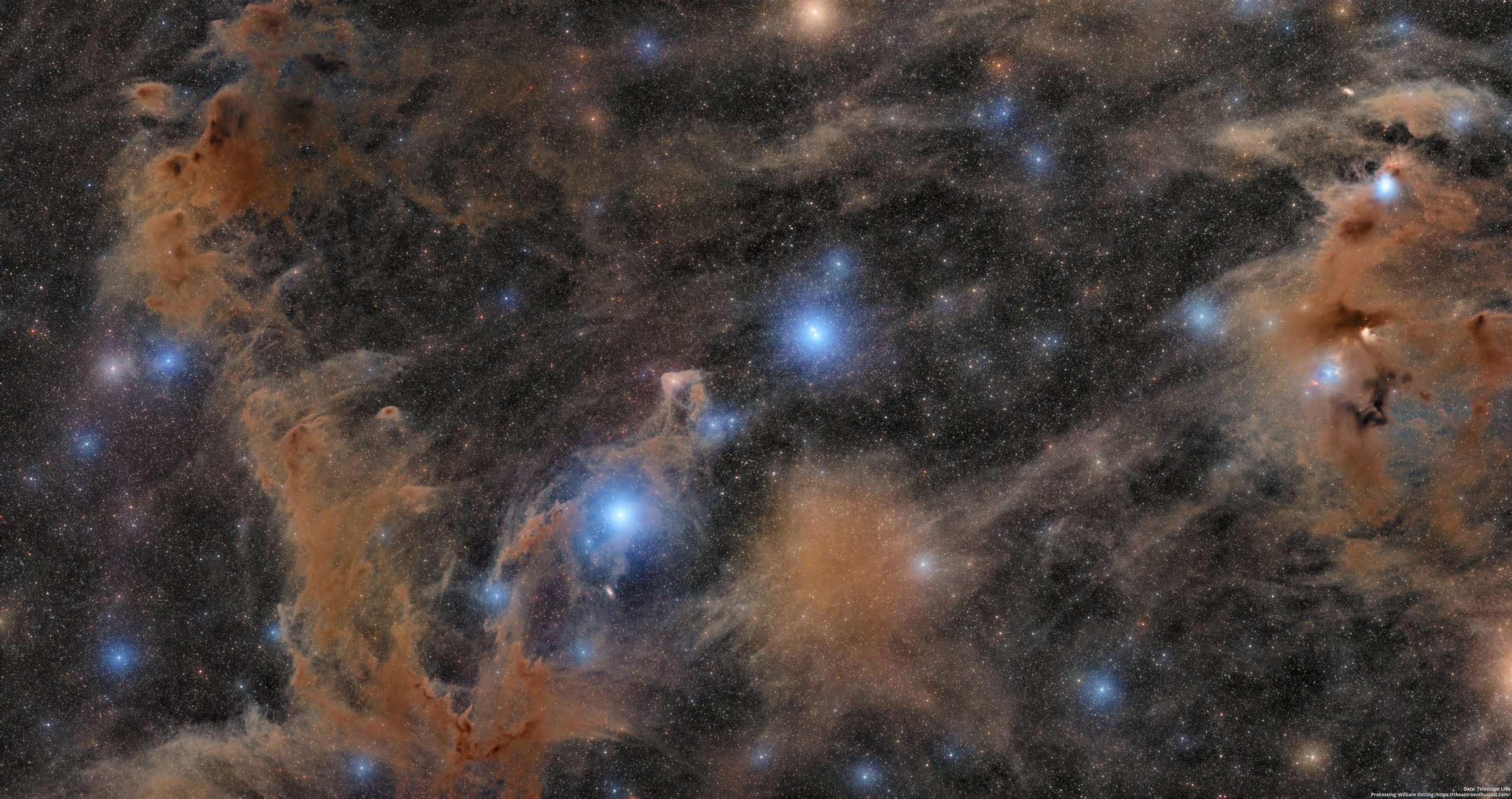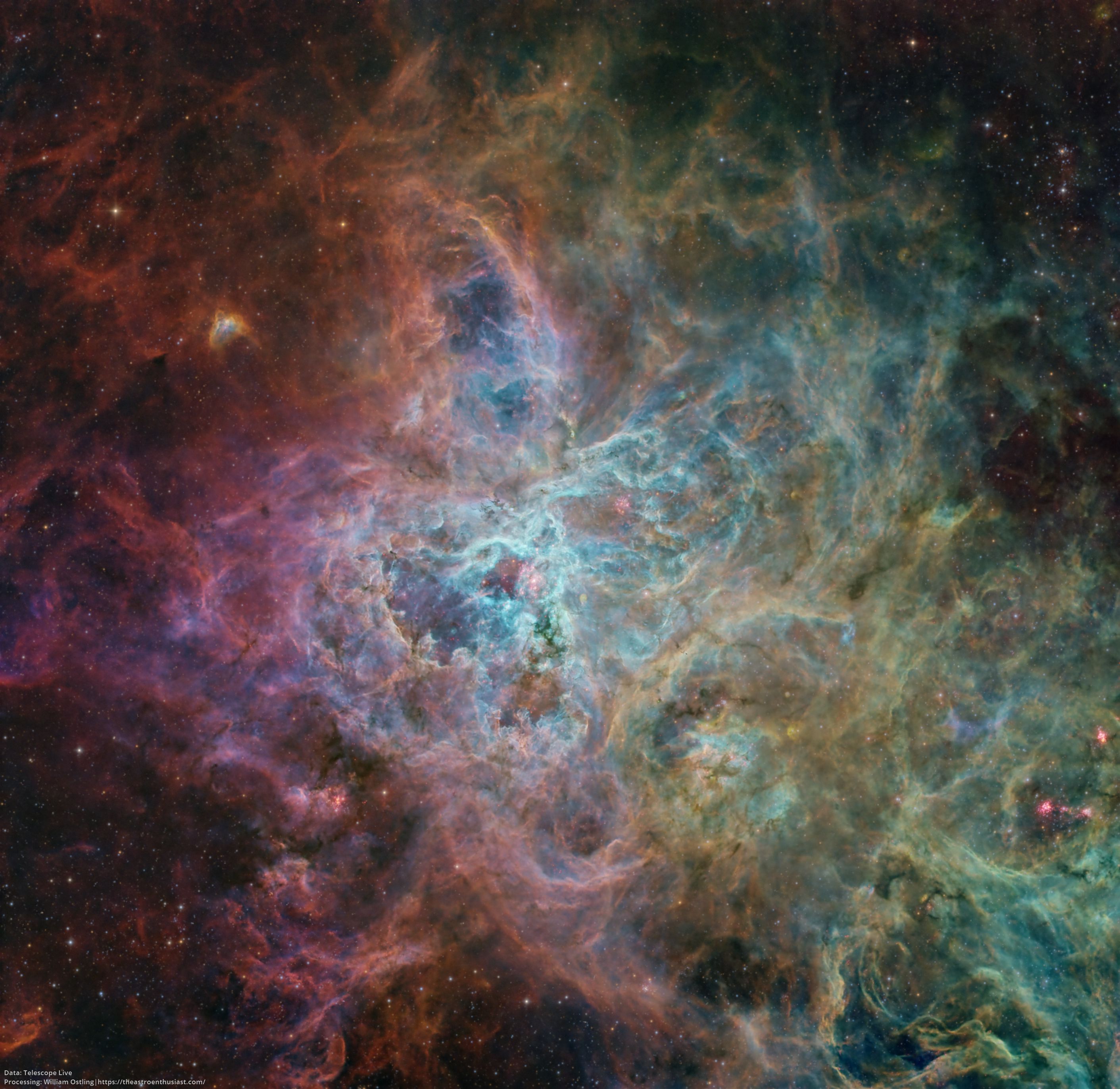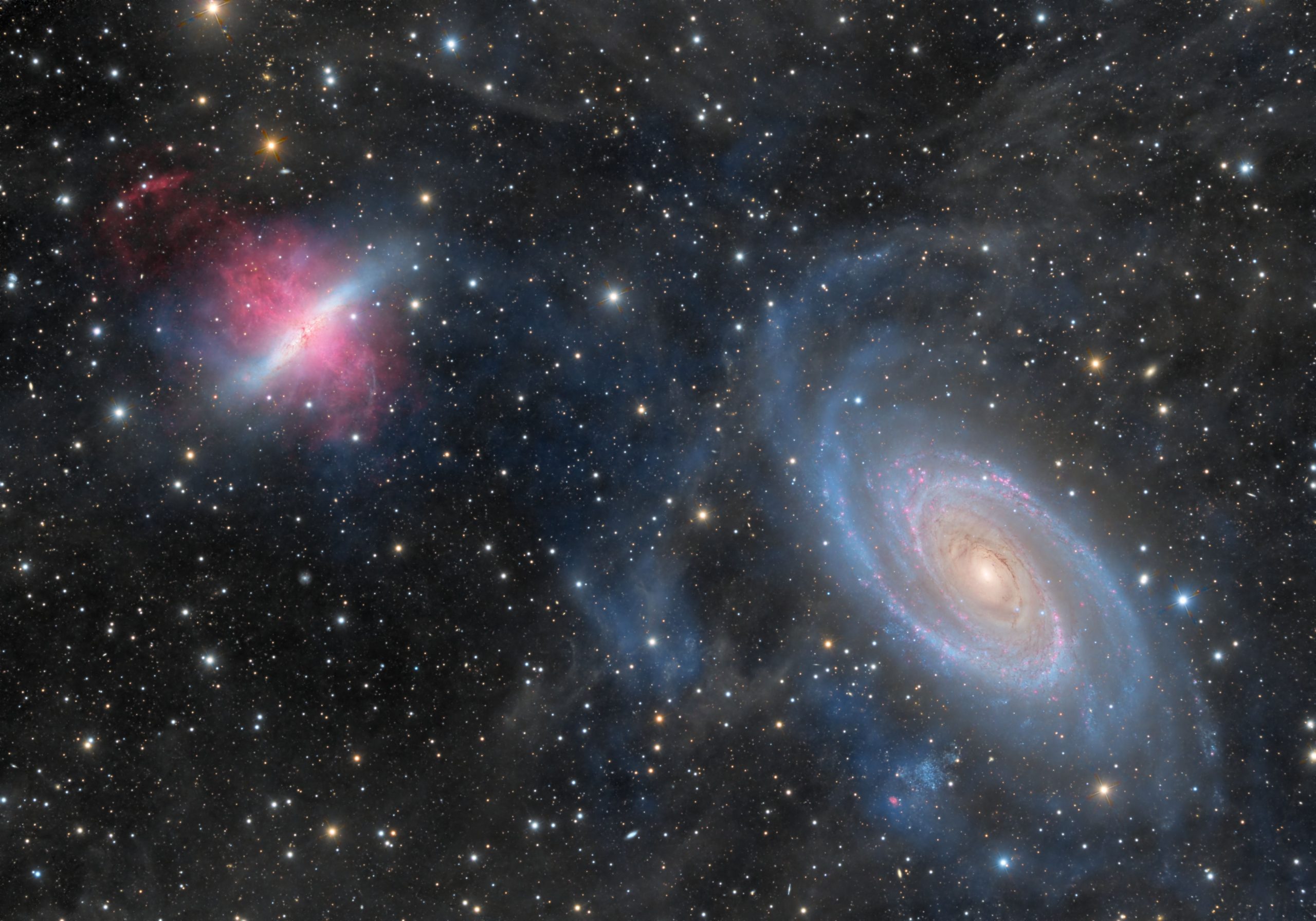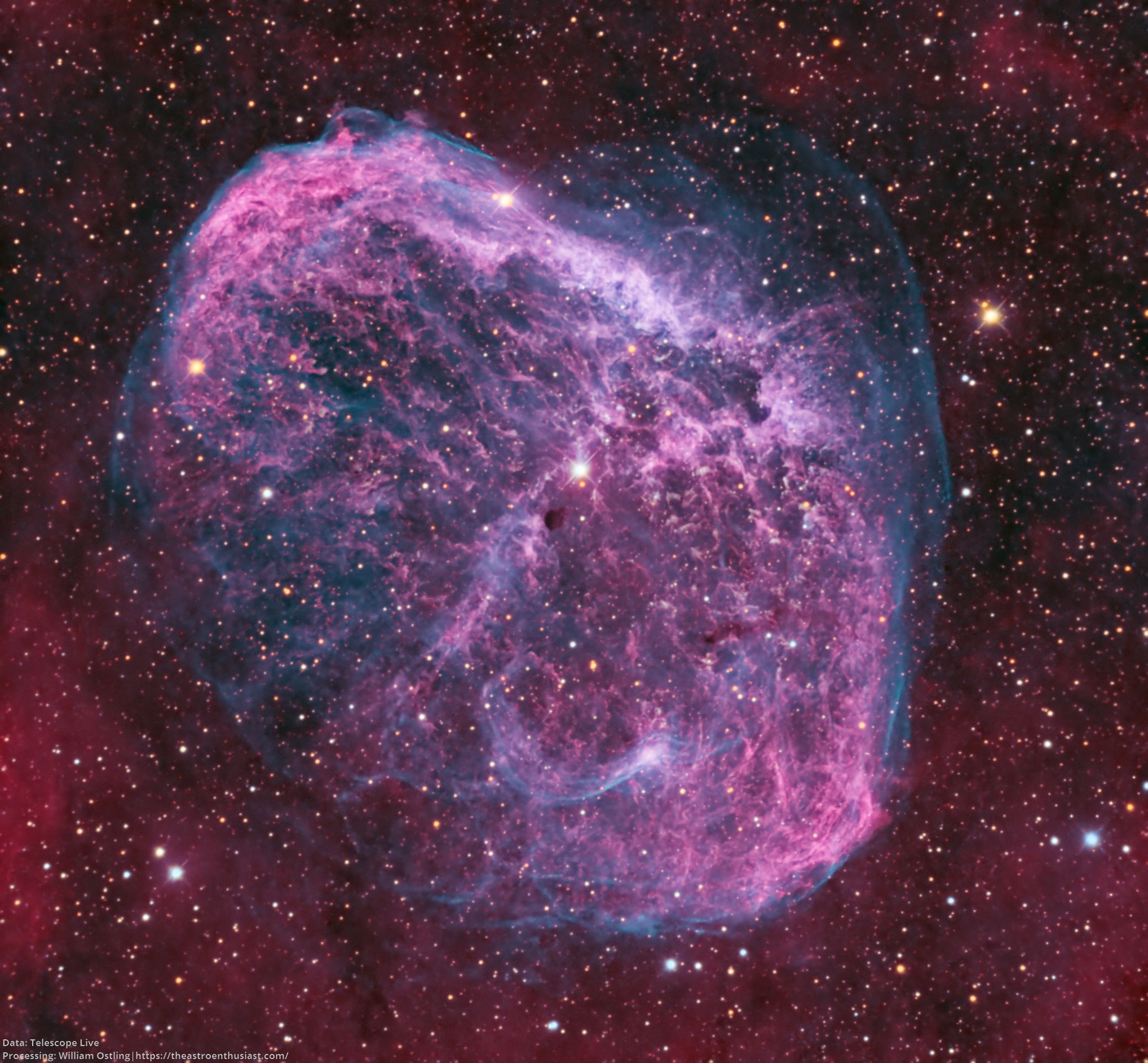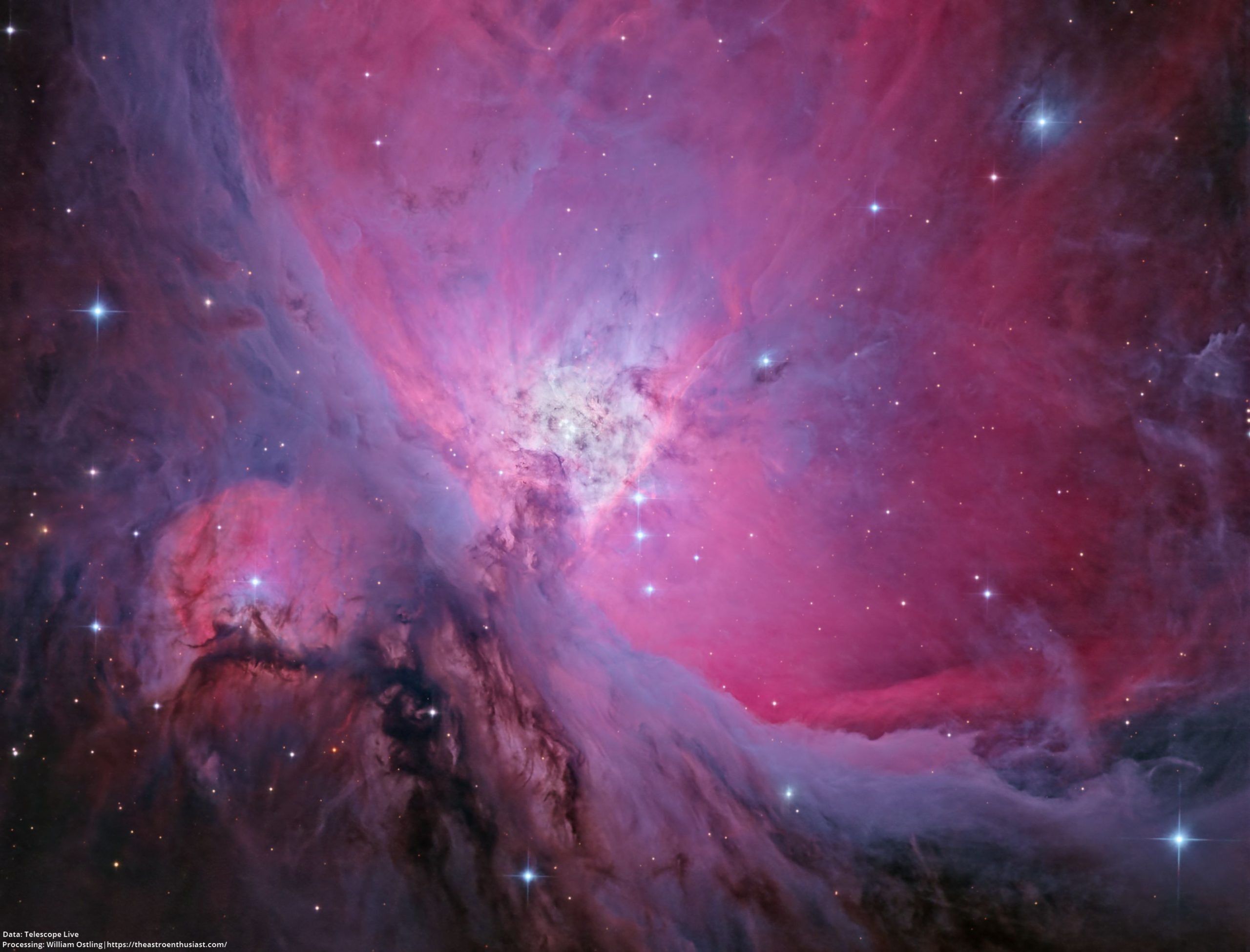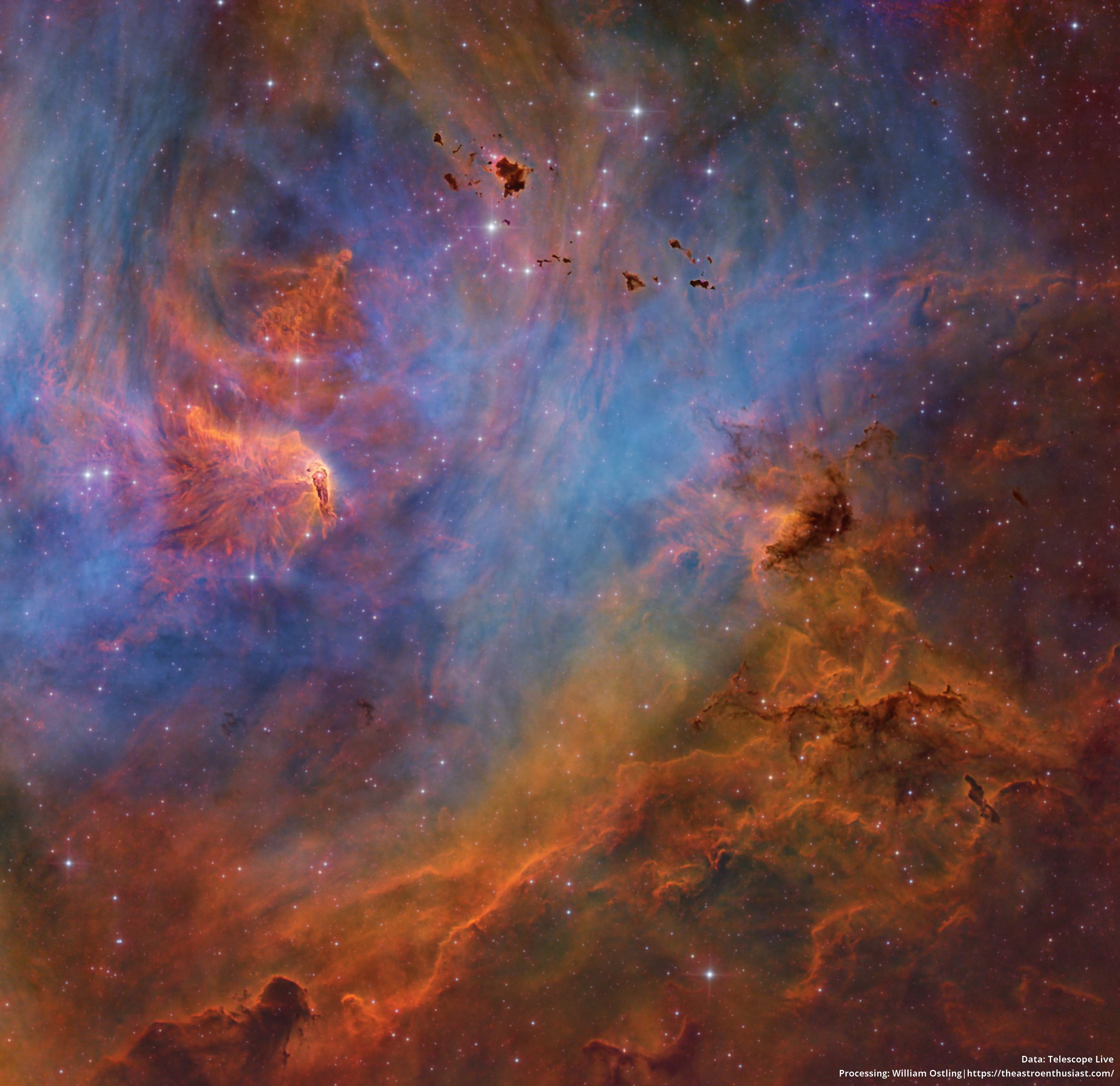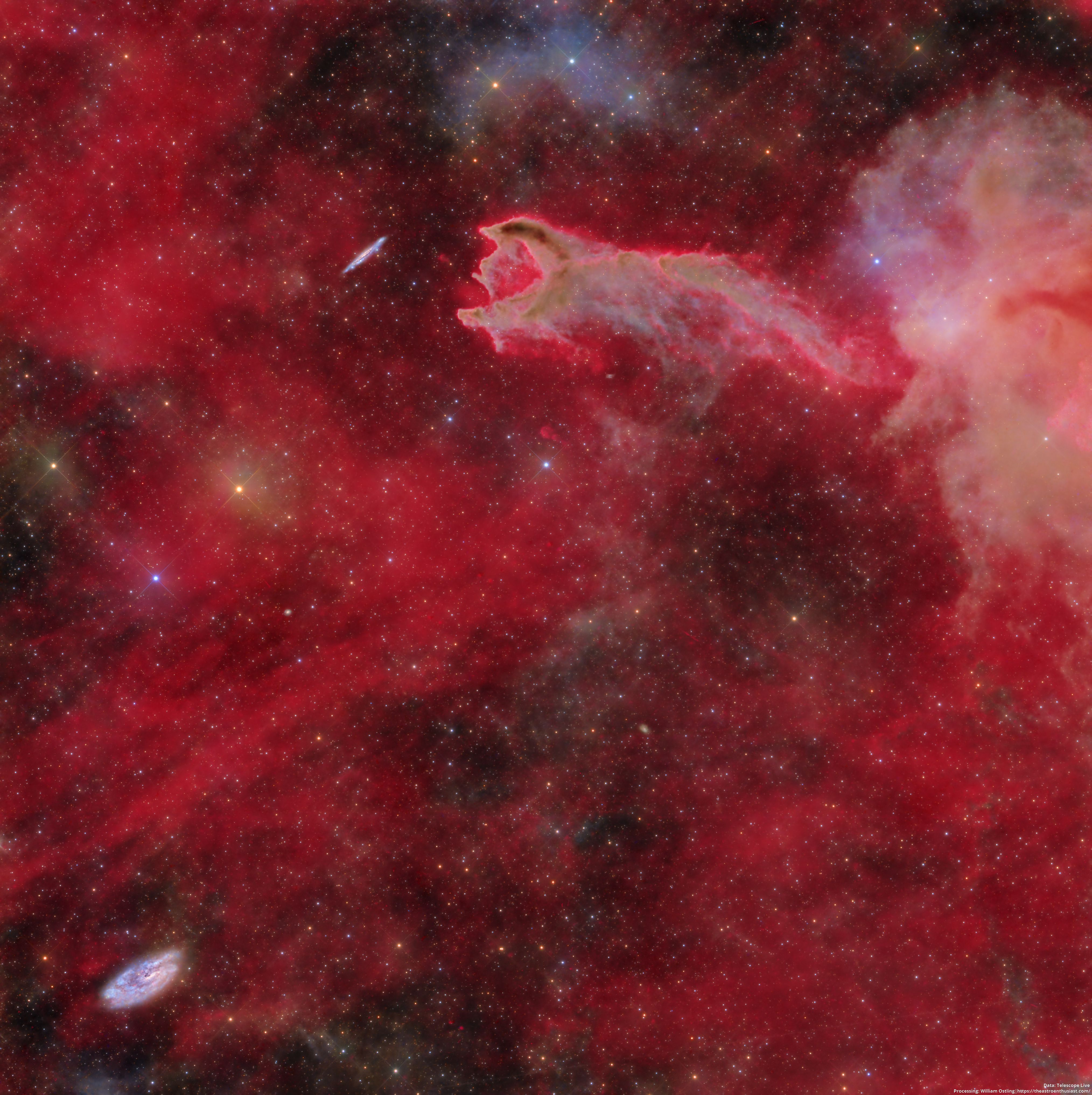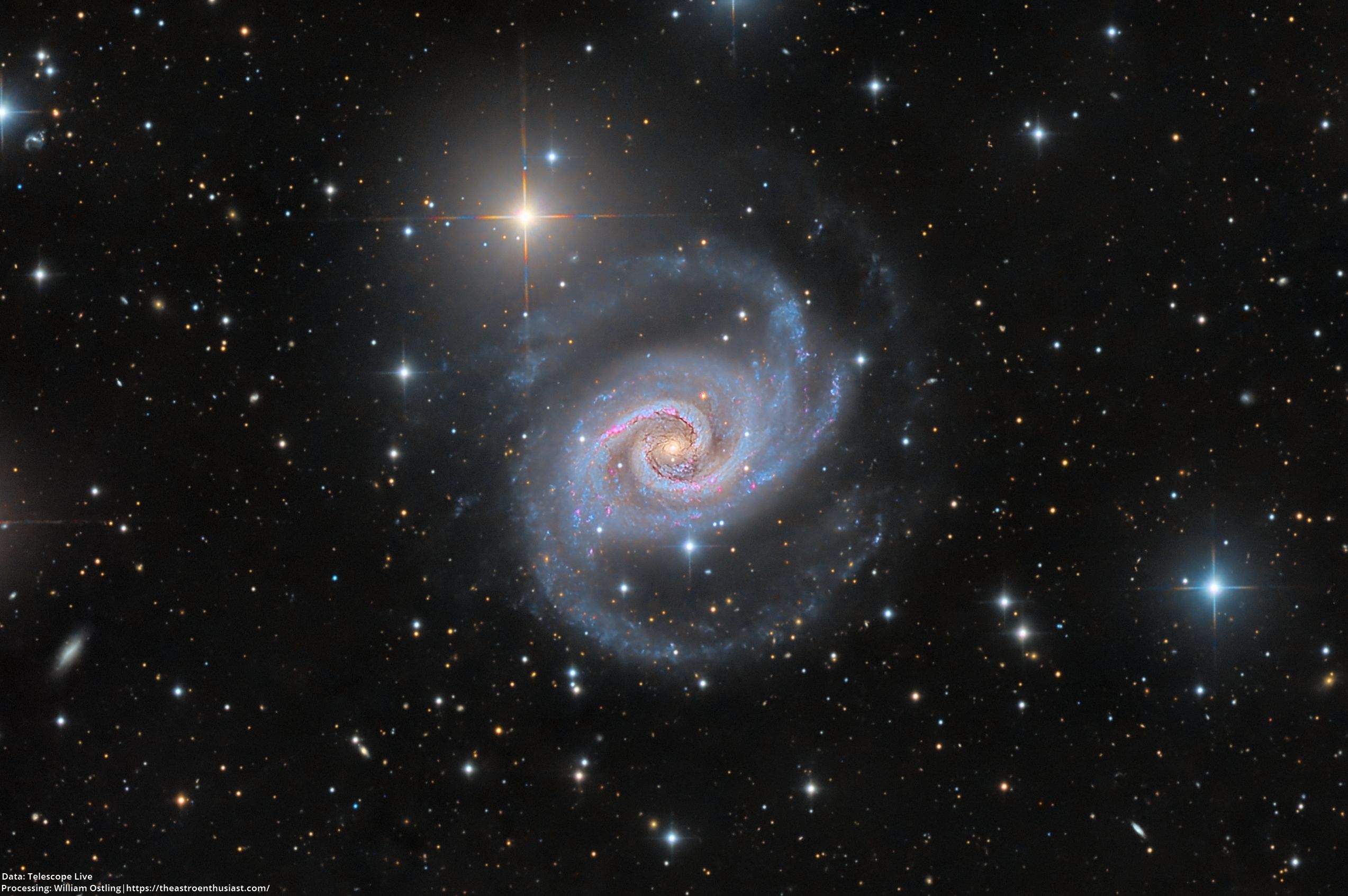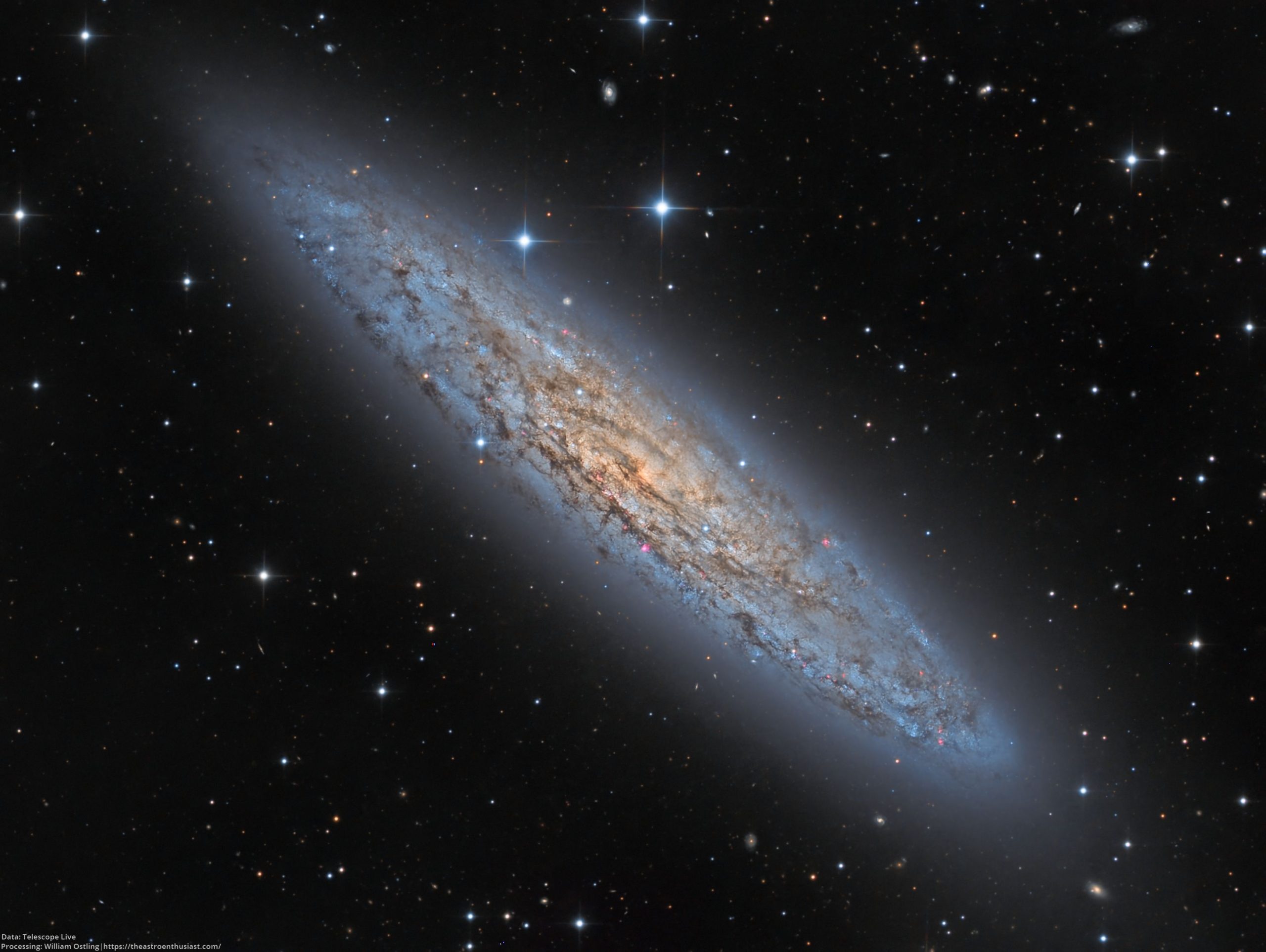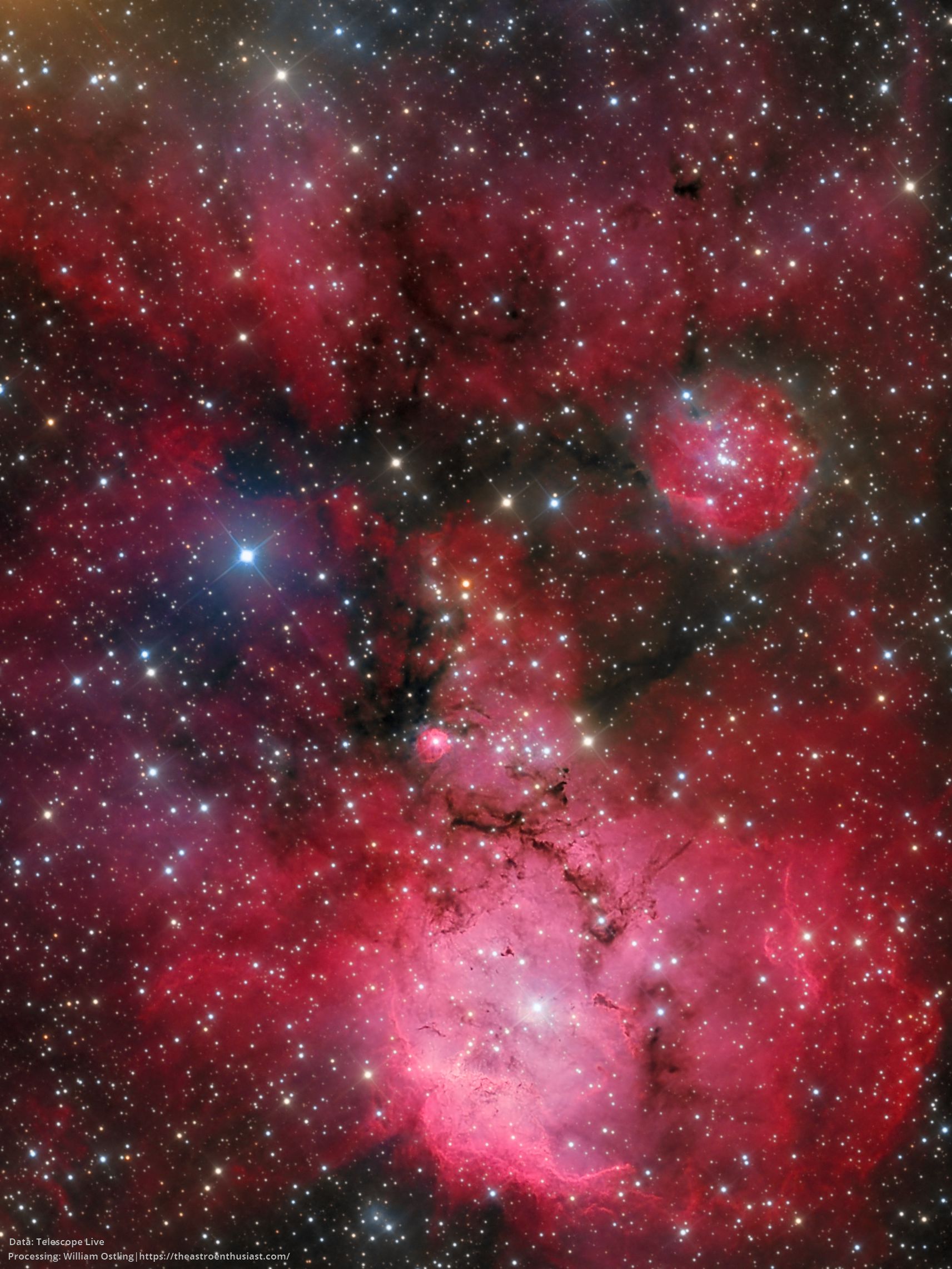A 3-panel mosaic of dust in the Chamaeleon region
This was one of the most difficult images that I’ve had the pleasure of processing, but I really think that the end result was worth all the trouble. Telescope live doesn’t really filter the data they publish, so most of the data I end up with is really hard to work with. This has an upside, though – I get a lot better at handling sub-optimal data! These datasets also weren’t meant to be a mosaic, so I had to do a lot of bludgeoning using photometric […]
Read more